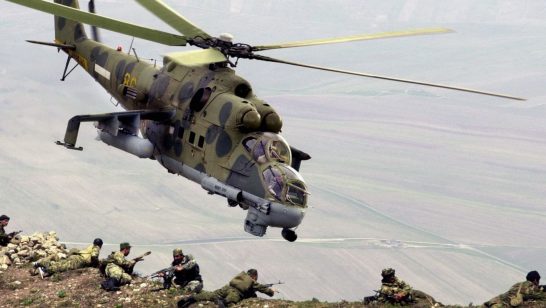
Compared with the drama of the UK referendum, the Warsaw NATO Summit may turn out to be a pretty dull affair. It seems that there is now a basic agreement on all major deliverables. That includes the forward-deployed NATO force in Poland and the three Baltic States, which is to be the most visible part of NATO’s updated deterrence posture. Russia will be discussed intensely and strongly criticized, but towards the end of the Summit the leaders will most likely agree on a variation of the good old two-track policy, with immediate emphasis on deterrence but also openness to some sort of dialogue with Moscow.
The interesting part may begin immediately after the Summit ends. How will Russia respond to NATO decisions in the political, military, or other areas? How should NATO then react to the statements and actions coming from Moscow?
Judging by official Russian pronouncements, the decisions coming out of Warsaw on strengthening deterrence will be received as openly hostile acts, bringing NATO troops and infrastructure, including the dreaded Missile Defence, closer to Russian territory and thus endangering Russia’s security. Any additional NATO pronouncements on closer cooperation with Finland and Sweden, as well as on assistance to Ukraine and Georgia, will be seen as adding insult to injury.
It is unlikely that NATO decisions, which will certainly be labelled as ‘aggressive’ and ‘escalatory’, can be left without a response by Moscow. Yet, up to this point, the Russians have been rather vague about the details of their reaction. President Putin recently spoke cryptically about the need to “devote particular attention to the tasks we must address in order to increase our country’s defence capability”, but also stated that “we are not going to let ourselves get intoxicated by these military passions”. Other Russian officials vowed “completely asymmetrical” response to NATO deployments or, alternatively, rather symmetrical strengthening of the conventional military potential of the Western Military District as deterrence against NATO.
It seems most likely that the Russian response would essentially involve the measures which have been either already announced as a part of the military modernization and re-alignment of Russian posture in the Western part of the country, or would boil down to adjustments of the previous plans. Such measures may include setting up new armoured divisions and armies in the Western military district, deployment of additional forces in the Arctic, re-armament of the Kaliningrad-based missile brigade with Iskander systems, introduction of new surface ships and submarines in the Baltic and Black Sea Fleet, or beginning of production of new nuclear-armed missiles for the strategic forces. With the magic touch of Russian propaganda, these long-planned moves can be re-packaged and unveiled as a response to the Warsaw Summit’s decisions. If an additional dramatic twist is required, Russian can declare that it is no longer bound by the 1997 NATO-Russia Founding Act, claiming that it has been ‘broken’ by the Warsaw decisions on forward deployments.
While such a reaction would bring new tensions to Russian-NATO relations (just imagine the press reports stemming from Kaliningrad deployment of Iskander missiles), it might – perversely – signal a readiness to stabilize the relationship with NATO. The Russian leadership will loudly claim that it is protecting the sanctity of its borders and is strengthening its defence against the ‘aggressive plans’ of the Alliance. But these moves would not necessarily signify a counter-escalation to NATO deployments. In Moscow, they would be seen as a necessary response, completing the latest action-reaction cycle of the confrontation rather than initiating a new one. In the logic of a tit-for-tat exchange, to which the Russians subscribe, it would be a way to match the NATO moves unveiled in Warsaw, and not to double down on the confrontation with the West.
It would be thus essential to ‘read’ Moscow’s response to Warsaw bearing in mind the Russian security policy, existing modernization plans and the specifics (read: nastiness) of the Russian anti-NATO propaganda. Only then can we determine whether we are witnessing Russian actions that genuinely challenge our security, or rather an elaborate piece of window dressing, or ‘pokazukha’. If the latter is the case, we should stay calm, remain united in implementing the decisions taken in Warsaw, and keep exploring the possible instruments and procedures for confidence-building with Moscow.
However, things can get much worse, as Russia can make two mistakes while interpreting the results of Warsaw. The first mistake would be to read too much into the Summit outcome and assume that the Alliance is gearing up for a confrontation, with subsequent NATO decisions on additional deployments of forces (including nuclear weapons) closer to Russia and on adding new members from Eastern Europe and Scandinavia in the pipeline.
The other mistake would be to treat the Summit decisions too lightly. Russia may look at a long and torturous process of assembling the package of forces for forward-deployed NATO battalions, take note of the German Foreign Minister’s recent quip criticizing NATO’s “symbolic tank parades on the Alliance’s eastern border”, add to it the perspective of elections in the U.S., and conclude that NATO’s unity on Russia and deterrence resolve is rather shallow, and may be broken if more pressure is applied.
The consequences of making either of these erroneous conclusions can be severe. Whether fuelled by heightened security concerns, or by the desire to gain the upper hand politically over the Alliance, Russia may decide to take the path of a significant transformation of its military posture in the Western part of the country, going beyond the ‘default’ response options mentioned above. Transfer of nuclear warheads from central storage sites to non-strategic aviation tactical missiles brigades, Black Sea or Baltic Sea Fleet bases may be one such potential game-changer. Mass deployment of INF-prohibited land-based cruise missiles, or relocation of newly formed armoured divisions to the border with NATO territory may have similar effect. Confronted with such a response, NATO states would most likely conclude that their deterrence posture is being overtaken by the new developments, and move to approve additional measures to reinforce Article 5 commitments in the East.
If the Russian leadership analyses the situation and the context of the decisions taken in Warsaw rationally, it will notice that most of NATO members display no particular willingness to go beyond the reinforced ‘tripwire’ arrangements for the allies bordering Russia. Proposals to significantly boost the NATO military presence in the Baltic and Black Sea areas and re-dress the regional forces imbalances are hotly discussed within the think tank community and supported by the allies in the region. However, the political and military leadership of the Alliance remains cautious, realizing the problems with political feasibility and practical sustainability of such regional military surges. But the situation may change if Moscow overplays its response to Warsaw. It would be unfortunate if Russia misreads the message of restraint from the Alliance, and decides that escalating the confrontation serves its interests better than gradual stabilization of the relationship.
The opinions articulated above represent the views of the author(s), and do not necessarily reflect the position of the European Leadership Network or any of its members. The ELN’s aim is to encourage debates that will help develop Europe’s capacity to address the pressing foreign, defence, and security challenges of our time.



